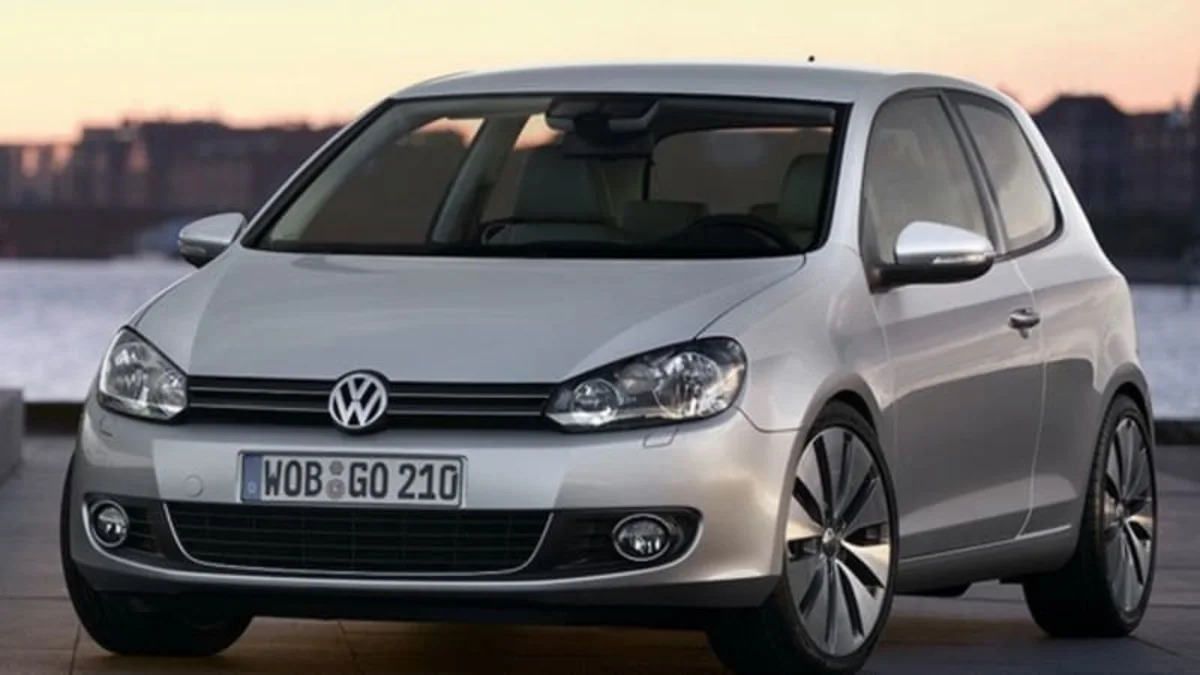Click for a high-res gallery of the new VW Golf
Anyone that has looked closely will realize that there is a lot of old Golf in the new sixth-generation hatchback from Volkswagen. However, you would have to look really close to find out just how much. The German TÜV NORD agency has certified that more than 40 percent of the mass of a new Golf is made from recycled materials. That's over 1,161 lbs of metal, glass and fluids. The vast majority, over 1,100 lbs, of that is metals such as steel and aluminum which are readily recyclable and, in fact, much of the metal used in many new cars is recycled scrap.
For example, when engine components such as blocks, heads and crankshafts are machined, all the chips are collected, washed and sent back to foundries and mills and fed back into the production process. Plastics and automotive glass are less recyclable, but automakers are increasing efforts to reuse scrap materials to cut down on raw material costs. On a related note, 95 percent of vehicles go through an "end of life" recycling process in the U.S.
[Source: Volkswagen]
PRESS RELEASE:
Over 500 kg of recyclates in new Golf
Official confirmation from TÜV NORD
Wolfsburg, 20 February 2009 - Volkswagen commissioned an audit into the use of secondary raw materials known as recyclates in the new Golf. The investigation showed that 527 kg of secondary raw materials, or over 40 percent of the vehicle weight, are used in the new Golf, thus conserving resources. As a result, the new Golf not only excels with its efficient TSI and common rail engines, but also through the use of environmentally-friendly materials. This is the first time that an audit into the use of recyclates in a complete vehicle has been conducted and certified by the TÜV technical inspection authority.
The systematic use of recyclates at Volkswagen represents a careful and environmentally compatible approach to primary raw materials and reflects the capabilities of modern vehicle production. The metal life cycle is crucial to an overall ecological assessment of the vehicle. 501 kg of metal recyclates are used in the Golf, thus making an important contribution to conserving resources. Plastics account for 15 kg of the total recyclate weight, glass for 9 kg and operating fluids for 2 kg. TÜV NORD has certified these results. Some 5,000 parts were assessed during the audit.
Dr. Ulrich Hackenberg, Member of the Board of Management of the Volkswagen brand with responsibility for 'Development', commented: "By taking effective recycling separation into account as early as the development stage, Volkswagen is making sure that end-of-life vehicles can also be returned to the material cycle." Dr. Harald Ludanek, Head of Total Vehicle Development and Protoypes at Volkswagen and also the Group's Vehicle Recycling Officer, added: "A prerequisite for the use of high-quality recyclates is that sufficient quantities are available for series production. Obviously, the recylcates must comply with the same high quality standards that Volkswagen sets for primary raw materials. The demanding specifications for surface quality and material durability referred to recyclates guarantee the safety, reliability and longevity of our vehicles."
Conserving primary resources and closing material cycles is an important goal for product development at Volkswagen. This is why the use of quality-assured recyclates in almost all vehicle parts is not only permitted, but proactively encouraged. Recyclates, which can replace primary materials and therefore contribute to the efficient use of resources, are obtained by treating production residue or from used materials.
Between 2000 and 2006, Volkswagen and its partner SiCon successfully developed the award-winning Volkswagen-SICON method for treating shredder residue from recycling end-of-life vehicles. This economically viable method has a proven recycling rate for present-day vehicles in excess of 85%. While metal recyclates are returned to the cycle in the form of new metal materials, granulated plastic waste, for example, is used as a reducing agent in blast furnaces. More information on the Volkswagen-SiCon method is available from www.volkswagenag.com



Sign in to post
Please sign in to leave a comment.
Continue